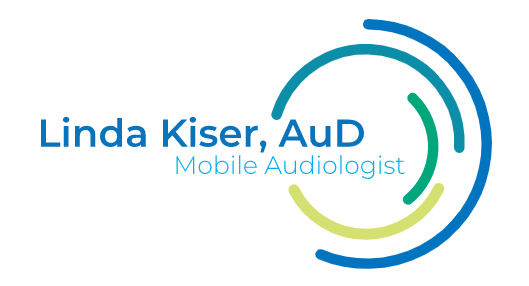Frequently Asked Questions
What is an audiologist?
What types of tests and treatments do audiologists perform?
- Diagnostic hearing tests: Assessing the level and type of hearing loss through comprehensive evaluations.
- Audiologic evaluations: Evaluating the overall auditory system and determining the best course of treatment.
- Hearing aid fittings and consultations: Helping individuals choose and fit appropriate hearing aids for their specific needs.
- Hearing aid repairs and maintenance: Assisting with repairs and maintenance of hearing aids.
- Aural rehabilitation: Providing therapy and training to improve communication and adjust to hearing loss.
- Pediatric hearing loss detection and treatment: Specializing in assessing and treating hearing loss in children.
- Hearing loss prevention and protection programs: Educating individuals on ways to prevent hearing loss and providing protective devices like earplugs.
- Tinnitus treatment programs: Developing strategies and therapies to manage tinnitus symptoms.
- Dizziness and balance testing and treatment: Evaluating and treating balance disorders and related symptoms.
- Cochlear implant candidacy evaluations and implant programming: Assessing eligibility and providing support for cochlear implant recipients.
How do I know if I have hearing loss?
- Difficulty understanding speech, especially in noisy environments.
- Frequently asking others to repeat themselves.
- Perceiving muffled or unclear sounds.
- Turning up the volume of the TV or radio to high levels.
- Avoiding social situations or conversations due to difficulty hearing.
- Ringing or buzzing sounds in the ears (tinnitus).
What causes hearing loss?
- Aging process: Gradual hearing loss due to age-related changes in the auditory system.
- Noise exposure: Prolonged exposure to loud noises, such as occupational noise or recreational activities.
- Medications: Certain medications can have side effects that affect hearing.
- Infections: Ear or sinus infections can lead to temporary or permanent hearing loss.
- Trauma: Head or ear trauma can damage the auditory system.
- Genetics: Some types of hearing loss have a genetic component.
- Diseases and medical conditions: Conditions like Meniere's disease, otosclerosis, and certain tumors can cause hearing loss.
How is hearing loss diagnosed?
- Pure-tone audiometry: Testing the individual's hearing sensitivity across different frequencies.
- Speech audiometry: Assessing the ability to understand speech in various listening conditions.
- Tympanometry: Evaluating middle ear function and detecting conditions like fluid buildup or eardrum abnormalities.
- Otoscopy: Examining the ear canal and eardrum for signs of blockages or damage.
- Additional tests: Depending on the specific symptoms and suspected causes, other tests may be conducted.
What are the different degrees of hearing loss?
- Normal hearing (0-25 dB HL)
- Mild hearing loss (26-40 dB HL)
- Moderate hearing loss (41-70 dB HL)
- Severe hearing loss (71-90 dB HL)
- Profound hearing loss (greater than 91 dB HL)
What are the different types of hearing loss?
There are three main types of hearing loss, each caused by different factors and requiring different approaches to hearing aid technology and features for optimal listening experience. The three types of hearing loss include:
- Sensorineural hearing loss: This type of hearing loss results from problems in the inner ear or the auditory nerve. It often occurs due to damage to the small hair cells or nerve fibers in the auditory system. Sensorineural hearing loss is the most common type in adults, accounting for over 90 percent of hearing loss among hearing aid users. Age-related changes and noise exposure are common causes of this type of hearing loss. Treatment options for sensorineural hearing loss include various hearing aids.
- Conductive hearing loss: Conductive hearing loss occurs when there is a problem in the external or middle ear. It happens when sound is not efficiently conducted through the ear canal, eardrum, or tiny bones of the middle ear, resulting in reduced sound loudness. Earwax blockage, fluid in the middle ear, ear canal obstruction, middle ear infections, perforation in the eardrum, or diseases affecting the middle ear bones can lead to conductive hearing loss. Treatment options for conductive hearing loss may involve hearing aids, medical implants, medication, or surgery.
- Mixed hearing loss: Mixed hearing loss is a combination of both sensorineural and conductive hearing loss. It occurs when there are problems in both the middle and inner ear. Treatment options for mixed hearing loss depend on the nature of the impairment and the symptoms experienced, ranging from hearing aids to surgical interventions.
What are the signs of hearing loss in children?
- Failed newborn hearing screening
- Delays in speech and language development, including babbling in infants
- Frequent ear infections
- Lack of response to loud sounds
- Not turning to the source of sounds after six months of age
- Difficulty following verbal directions
- Daydreaming in many situations
- Concerns expressed by teachers or failed school hearing screenings
- High volume on the TV or radio
- Complaints from the child about difficulty hearing
What style of hearing aid is suitable for me?
Today, there are various types of hearing aids available, and the choice of style or device depends on your lifestyle, budget, and specific hearing loss needs. There are in-the-ear styles as well as behind-the-ear styles to choose from. It is important to consider the features that would be most beneficial to you when selecting the right device. From directional microphones to waterproof options, there are numerous varieties designed to cater to individual preferences. In fact, modern hearing aids are even equipped with Bluetooth connectivity, enabling seamless integration with wireless devices such as cell phones or televisions.
Thanks to advancements in digital technology and miniaturization of internal components, hearing aids now come in various sizes and styles. Many of today's hearing aids are sleek, compact, and innovative, offering solutions for a wide range of hearing aid users. When deciding on a style of hearing aid, the following factors should be taken into consideration:
- The type and degree of your hearing loss
- Power requirements
- Manual dexterity and visual abilities
- Budget considerations
- Cosmetics and aesthetics
- Anatomical and medical factors
- Lifestyle requirements
What are assistive listening devices (ALDs)?
Assistive listening devices (ALDs) can benefit people with all types and degrees of hearing loss. While the microphone of a typical hearing aid is worn on or behind the ear, its ability to enhance the talker-to-background-noise ratio may be limited. However, ALDs are specifically designed to increase the loudness of desired sounds, such as a radio, television, or a public speaker, without amplifying the background noise. This is achieved by placing the microphone of the assistive listening device close to the talker or the device being used, while the microphone of the hearing aid remains close to the listener.
ALDs encompass a range of devices, including alarm clocks, TV listening systems, telephone amplifying devices, and auditorium-type assistive listening systems. Many newer devices are small, wireless, and compatible with digital hearing aids. For example, alarms and other home ALDs can be discreetly placed on tables, next to the TV, or mounted on the wall.
What is tinnitus?
What causes tinnitus?
- Noise-induced hearing loss
- Earwax build-up in the ear canal
- Certain medications
- Ear or sinus infections
- Age-related hearing loss
- Ear diseases and disorders
- Jaw misalignment
- Cardiovascular disease
- Certain types of tumors
- Thyroid disorders
- Head and neck trauma
How is tinnitus treated?
- Hearing aids with tinnitus-masking features
- Tinnitus retraining therapy
- Sound therapy
- Avoidance measures
- Avoidance of certain medications
- Behavioral therapy
What distinguishes an audiologist from a hearing instrument specialist (HIS)?
• When seeking treatment for hearing loss, it's important to understand the differences between various hearing healthcare professionals. Two commonly encountered professionals in this field are audiologists and hearing instrument specialists (HIS). Here's a breakdown of their dissimilarities:
Audiologist: An audiologist possesses comprehensive training to diagnose, treat, and monitor disorders related to the hearing and balance systems. They receive education in areas such as anatomy, physiology, amplification devices, cochlear implants, electrophysiology, acoustics, psychophysics, and auditory rehabilitation. Audiologists earn a minimum of an undergraduate and doctoral degree in audiology, and they typically complete a supervised externship before acquiring state licensure and national certification. This educational path generally requires eight years of post-secondary education (four years of college and four years of graduate school). The graduate school years focus on the medical, diagnostic, and rehabilitative aspects of hearing loss, hearing aids, and the vestibular system. Following their training, audiologists must pass a national standardized examination to become eligible for state licensure. They are also required to meet continuing education requirements to maintain their licensure. For individuals with hearing loss, auditory issues, or balance problems, an audiologist is the most qualified professional to provide diagnosis and treatment.
Hearing instrument specialist (HIS): A hearing instrument specialist is licensed to conduct audiometric testing and is authorized to sell and fit hearing aids. To obtain a license, an HIS usually completes a certification program specifically focused on hearing aids, along with in-the-field training hours and passing an exam. Hearing instrument specialists are proficient in fitting and repairing hearing aids; however, they do not possess the expertise to diagnose hearing loss.

